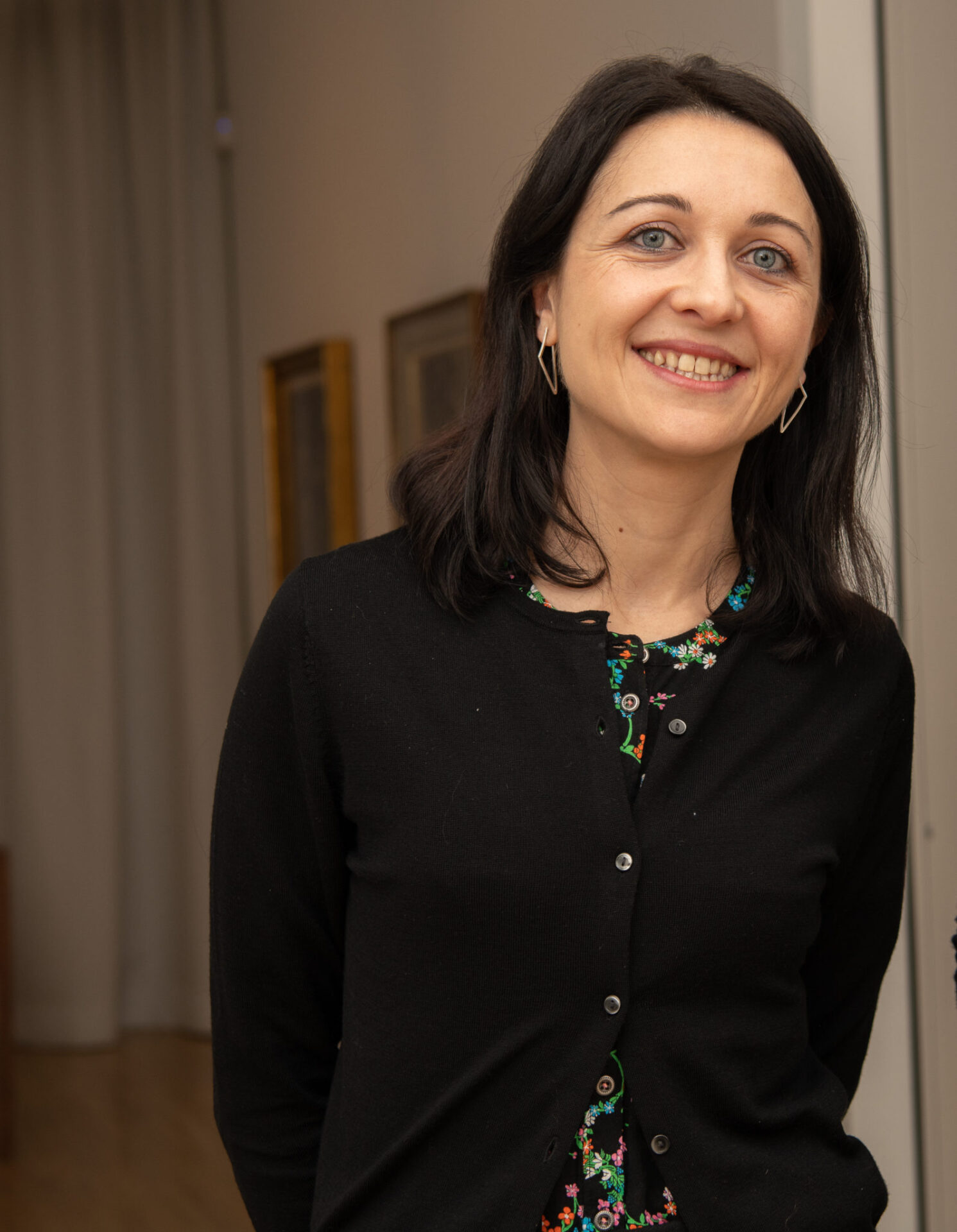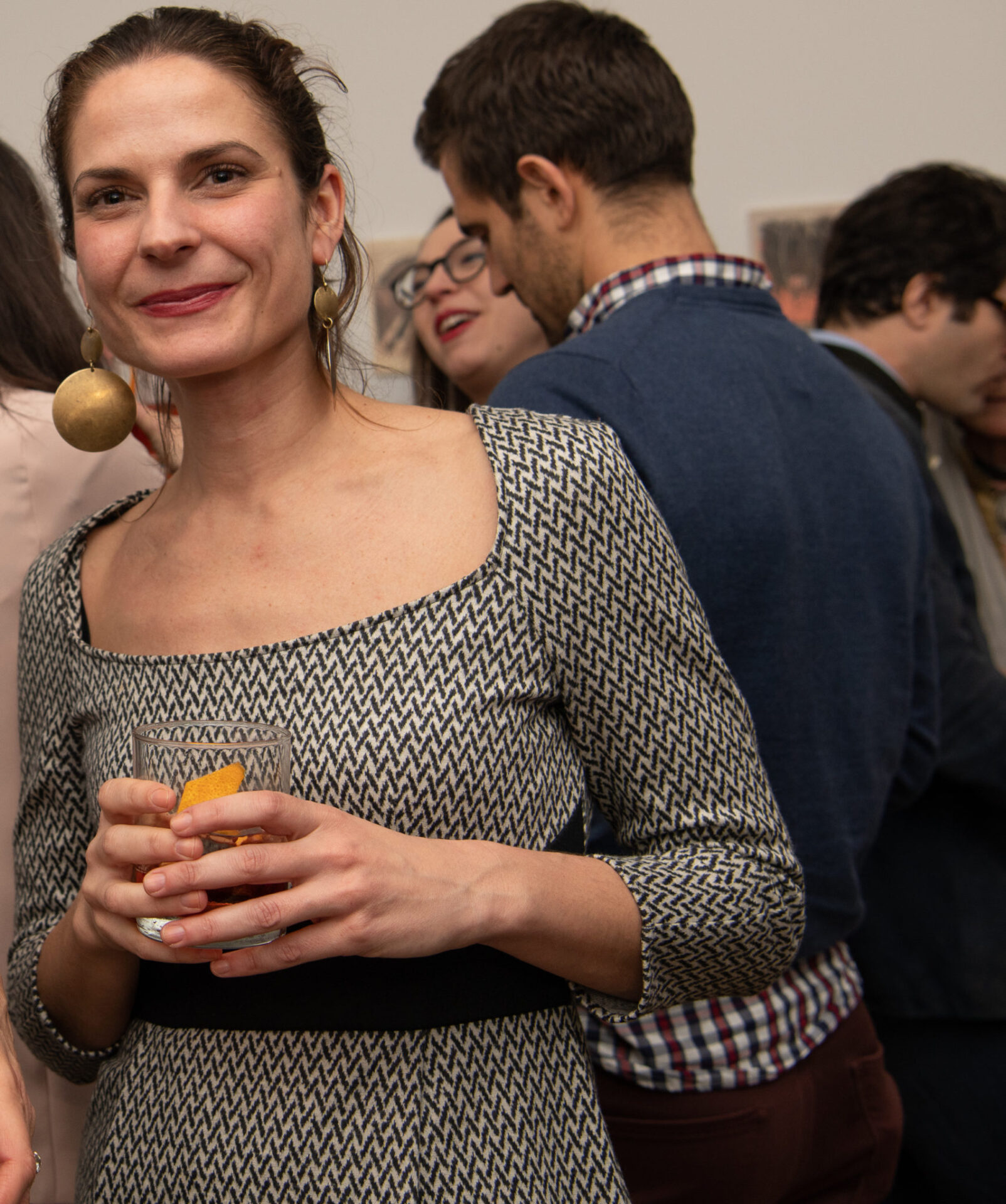After introducing our spring interns, we would like to take a moment for Caterina Caputo, and Carlotta Castellani, our Spring 2019 fellows, to introduce themselves. Also staying with us through May is Erica Bernardi, extending her fellowship from winter 2018 into spring 2019.

– What is your favorite artwork from the Metaphysical Masterpieces show at CIMA and why?
One of my favorite artworks from CIMA’s current exhibition is Mario Sironi’s Urban Landscape (1920): a dramatic and melancholy vision of the city which became a sort of visual urban poetry.
– Tell me the most interesting thing you have seen so far in NYC:
Cinemas on the rooftops!
– If you weren’t a PhD candidate, what would you be doing instead?
I would have an art gallery specialized in photography…but I also dream of owning an independent cinema…
– When was your first time in New York? What surprised you the most about this city?
My first time in New York was in 2009, on summer holidays… Coming from Florence, the major impact was the city’s skyline.
– Best 3 museums or art sites worldwide according to your taste:
Nationalgalerie in Berlin; MoMA in New York, and Pompidou in Paris. Also, I would like to add the photography section of Moderna Museet of Stockholm.
– If you could purchase any painting, which one would it be? Why? And where would you put it in your apartment?
I would buy photography, not a painting… exactly the photography project Café Lehmitz by Anders Petersen.
– Which city in Italy are you from? How would you describe it, using three words?
I am from Florence…3 words? Dante, Renaissance, and…Uffizi.
– What do you like to do when you are not working?
One of my biggest passions when I’m not working is hiking, when I have the opportunity I do this. I also love analog photography.
– How did you first become interested in art history?
I don’t have a clear memory of this, but ever since I was a child, I would spend hours drawing, copying paintings from books.

– What is your favorite artwork from the Metaphysical Masterpieces show at CIMA and why?
Fiori by Giorgio Morandi, painted in 1920. It is a small painting, the subject is simple, it does not contain anything enigmatic or dramatic and it uses of few colors and elements. Nevertheless, it sums up a perfection in geometry and forms that looks particularly impressive to me: I am amazed each time I observe the thin black line behind the vase. Morandi needed just a line, at a certain height, to solve the whole composition.
– Tell me the most interesting thing you have seen so far in NYC?
It is not any specific museum or exhibition, actually, but the city in itself. I like to walk through streets, strolling around, getting lost and feeling like a “flaneur.” The discordant sequence of buildings, signs, shop windows and people makes me lose any coordinate and I feel like a vessel, that can absorb this confused set of images. It is very refreshing.
– If you weren’t a PhD candidate, what would you be doing instead?
As I did in the past, I would probably work in a cultural institute of some kind. I consider “culture” in its broader sense, as part of the growth of each human being. Sometimes I consider my work as scholar too self-referential and I need some fresh air from sharing art with people – adults as well as kids – who help me remember what art is about.
– When was your first time in New York? Was surprised you the most about this city?
I visited NY with my family when I was 11 during around the holidays. As a kid the street lights and the height of the skyscrapers surprised me, but probably what settled mostly in my memory was the toy store FAO Schwarz on fifth Avenue. I felt like I was on a movie set when I stepped inside.
– Best 3 museums or art sites worldwide according to your taste
I deeply admire the Alte Pinakothek in Munich. When I was 23, I lived in the city for several months to study and I visited the Pinakothek infinite times. I was impressed by the architecture with the integration of the recent history as warning – it has revolver holes in its walls from WWII – and by the richness of the collection, from Altdorfer to Rubens. In Paris, the Gustave Moreau private house gave me infinite joy because of the surprising set up of its works of paper, which look like mediaval illuminated manuscripts. As third I would mention the convent of San Marco in Florence because it is part of my private geography with its astonishing Beato Angelico frescos. I remember playing in the cloisters since I was seven.
– If you could purchase any painting, which one would it be? Why? And where would you put it in your apartment?
Paul Klee’s Angelus Novus, 1921. I would have it in a dark room, with a light only on it.
– Which city in Italy are you from? How would you describe it, using three words?
I come from Florence, the open-air museum.
– What do you like to do when you are not working?
Working in art history is a special gift because everything you do is related, in one way or in another, to your work. Of course I entertain myself reading books and watching movies, but I guess that lately one of my favorite activities has been drawing with my 5 years old daughter, who has gold in her eyes.
– How did you first become interested in art history?
I guess I have always been. I can certainly remember when I started being interested in 20th century art though, that is not really present in my city. It happened during my fourth year of high-school, when I accidentally saw a Frida Kahlo exhibition catalogue and I got obsessed with her feminine iconography: I understood art could tell me things nobody would ever be able to talk to me about.
